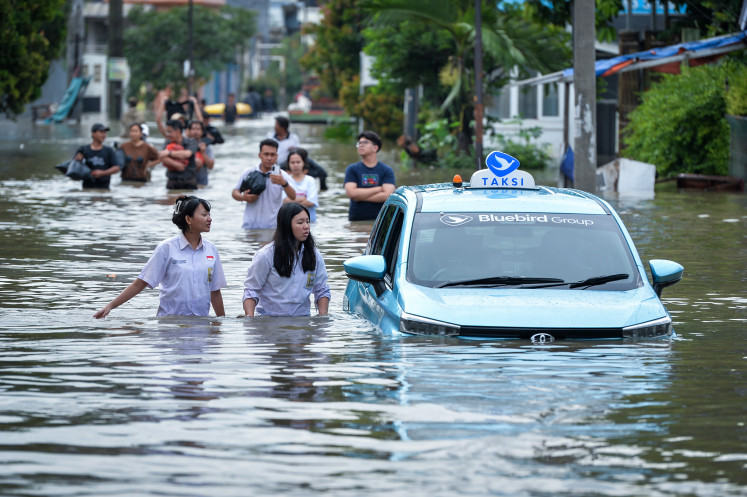Popular Reads
Top Results
Can't find what you're looking for?
View all search resultsPopular Reads
Top Results
Can't find what you're looking for?
View all search resultsTime to develop early warning systems to lessen disaster impact
Landslides occur often in the rainy season
Change text size
Gift Premium Articles
to Anyone
L
andslides occur often in the rainy season. Mountainous areas across Indonesia are vulnerable to the disaster, as evinced in the Central Java town of Banjarnegara last week.
The characteristics of landslides are different from those of other disasters such as tsunamis, forest fires, flooding and volcanic eruptions. Landslides happen so quickly that people may fail to anticipate them, often resulting in a high fatality rate, as is the case of the disaster in Jemblong village in Banjarnegara on Dec. 12.
As of Dec. 16, the landslide had claimed 64 lives, with 46 people still missing. The question now is: can we minimize the impact of landslides? The answer is yes. We can curb the impact by developing an early warning system and improving the capacity of the local community in disaster mitigation.
Early warning systems are crucial to avoid the escalating impact of disasters. The system comprises a set of warning information to enable individuals or communities to make necessary preparations and act appropriately in sufficient time to reduce the possibility of harm or losses.
The National Disaster Mitigation Agency (BNPB) has developed an early warning system to lessen the adverse impact of eruptions of Mount Merapi and tsunamis in several areas.
However, it is rare that an early warning system is used to mitigate landslides, especially in developing countries.
According to the International Council for Science (ICSU) and the International Program on Landslides (IPL), the most cost-effective measures to mitigate landslides are early warning systems and evacuation. An early warning system is particularly vital in areas where social values or cultural heritage do not support relocation.
In the event of a landslide, an early warning system serves to detect the occurrence of any movement of critical land. It provides information that precedes a landslide in time to initiate mitigation and deliver hazard warning.
A key factor of the early warning system is the ability to identify small but significant indicators before the landslide strikes.
We can collect precise information before the landslide happens, then decide whether to relocate locals or strengthen the structure of the land.
In general, the working principles of early warning systems for tsunamis and landslides are identical. For tsunamis, the system detects the waves of the ocean.
Using several instruments, the movement of waves or critical land is transferred as information that is used by the institution responsible for disaster mitigation to take action.
However, establishing an early warning system for landslides is complex and difficult. It is complex because it involves different fields of science such as hydrology, land, weather and climatology. These sciences are needed to establish several indicators in the early warning system.
It is also difficult because we need instruments and specialists who are able to analyze, monitor and communicate frequently the data from the early warning system.
Even in developed countries, there are always some failures and false alarms.
However, the government should implement an early warning system as a way to mitigate the havoc wreaked by such disasters.
An early warning system can reduce the number of fatalities significantly, because it allows the community to react before a disaster strikes. However, the cost of developing an early warning system is high.
To overcome the problems, we should prioritize the development of early warning systems in certain areas, especially areas that have at-risk land and high population density. Other factors are the existence of economic activity and cultural heritage.
To be able to work properly, the development of early warning systems should be followed by increasing the preparedness of local communities.
A series of training programs will be required to enhance the response of the local community when early warning systems deliver crucial information about a potential coming landslide.
The quick response of the communities is an essential factor to avoid large numbers of fatalities. The government should also disseminate information about the importance of the early warning system to the community, because sometimes the community underestimates and ignores the early warning system.
The landslide in Banjarnegara teaches us a worthy lesson. Disasters can occur without prior notice and cannot be avoided.
Nevertheless, we can minimize the impact by developing an early warning system and improving the capacity of disaster-prone local communities to mitigate the calamity.
____________________
The writer is an alumnus of the Australian National University's (ANU) environmental management and development program (EMD) and participant of Training of Trainer (ToT) Disaster Mitigation Planning 2013 at Ritsumeikan University, Japan.










